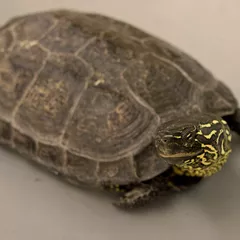Chun Pi
Chun Pi
English: Ailanthus barks
Chinese: 椿皮
Parts used: The dried bark
TCM category: Herbs that stabilize and bind
TCM nature: Cold
Organ affinity: Stomach Large intestine
Scientific name: Ailanthus altissima
Other names: Tree of heaven, Ailanthus, Varnish tree, Chouchun, Bai chun pi
Use of Chun Pi (ailanthus barks) in TCM
Please note that you should never self-prescribe TCM ingredients. A TCM ingredient is almost never eaten on its own but as part of a formula containing several ingredients that act together. Please consult a professional TCM practitioner, they will be best able to guide you.
Preparation: Collect the bark, clean and dry
Dosage: 3-6g
Main actions according to TCM*: Clears Heat, dries Dampness and stops leukorrhea. Astringes the Intestines. Stops bleeding. Kills worms.
Primary conditions or symptoms for which Chun Pi may be prescribed by TCM doctors*: Diarrhea Yellow leukorrhea Menorrhagia Dysfunctional uterine bleeding
Contraindications*: Contraindicated for these patients with Empty Cold patterns due to Spleen and Stomach Yang Deficiency or noticeable Kidney Yin Deficiency.
Common TCM formulas in which Chun Pi is used*
Gu Jing Wan
Source date: 1481 AD
Number of ingredients: 6 herbs
Formula key actions: Nourishes Yin . Clears Heat. Stops bleeding. Stabilizes the menses.
Conditions targeted*: Dysfunctional uterine bleedingChronic pelvic inflammatory disease and others
Chun Pi is an assistant ingredient in Gu Jing Wan. This means that it either serves to reinforces the effect of other ingredients or it moderates their toxicity.
In Gu Jing Wan, Chun Pi bitter and astringent. It holds the Blood and prevents an abandoned disorder from developing, which is otherwise likely with long-term blood loss.
It is considered to be of less importance than the other ingredients because, if the Heat is cleared and the Yin is enriched, the Blood will resume its normal movement in the channels and the bleeding will stop by itself.
The use of an astringent, binding substance only serves to hasten this effect.
Key TCM concepts behind Chun Pi's properties
In Traditional Chinese Medicine (TCM), Chun Pi belongs to the 'Herbs that stabilize and bind' category. This category of herbs is used for treating abnormal discharges and displacement of Organs. This includes conditions such as diarrhea, discharges from the vagina, penis or rectum as well as prolapse of the Uterus or rectum. It is important to note that herbs in this category only treat symptoms, so one should also use herbs to treat the underlying Deficiency.
Furthermore Chun Pi is Cold in nature. This means that Chun Pi typically helps people who have too much 'Heat' in their body. Balance between Yin and Yang is a key health concept in TCM. Those who have too much Heat in their body are said to either have a Yang Excess (because Yang is Hot in nature) or a Yin deficiency (Yin is Cold in Nature). Depending on your condition Chun Pi can help restore a harmonious balance between Yin and Yang.
Chun Pi also tastes Bitter and Pungent. The so-called 'Five Phases' theory in Chinese Medicine states that the taste of TCM ingredients is a key determinant of their action in the body. Bitter ingredients like Chun Pi tends to have a cleansing action on the body by clearing Heat, drying Dampness and promoting elimination via urination or bowel movements. On the other hand Pungent ingredients tend to promote the circulations of Qi and Body Fluids. That's why for instance someone tends to sweat a lot when they eat spicy/pungent food.
The tastes of ingredients in TCM also determine what Organs and Meridians they target. As such Chun Pi is thought to target the Stomach and the Large intestine. In TCM the Stomach is responsible for receiving and ripening ingested food and fluids. It is also tasked with descending the digested elements downwards to the Small Intestine. The Large Intestine on the other hand receives the "impure" parts of the digested food from the Small Intestine, absorbs the remaining fluids and excrete the remainder as feces.





